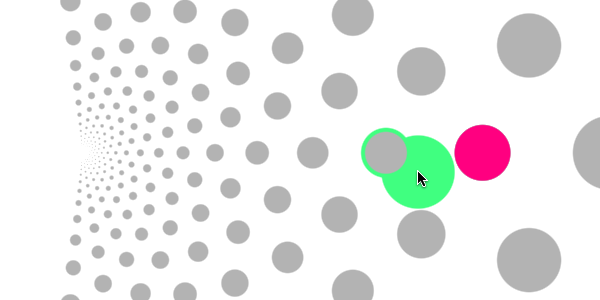
2D pointing task with distractors and the Bubble cursor technique (clik to enlarge).
Fitts' pointing paradigm is widely used to conduct controlled experiments and to evaluate new interaction techniques enhancing target acquisition. Many of them change the behavior of the cursor according to various inputs, most notably the positions of potential targets. We propose to extend Fitts' paradigm in order to challenge those techniques with distractors (i.e., potential targets which are not the goal of the user) in a controlled manner. To reduce variability, we add a single new factor to the paradigm, the distractor density. We specify a distractors distribution, fully determined by this factor together with those of Fitts' task, aimed at reducing bias toward a specific technique.
We also propose a preliminary extension of Fitts' law to take account of the sensitivity to the density of distractors as well as of the task difficulty. In an experiment, we compare five existing pointing techniques, and show that this extended protocol enables contrasted comparisons between them.

The code is available under the GPLv3.0 license.